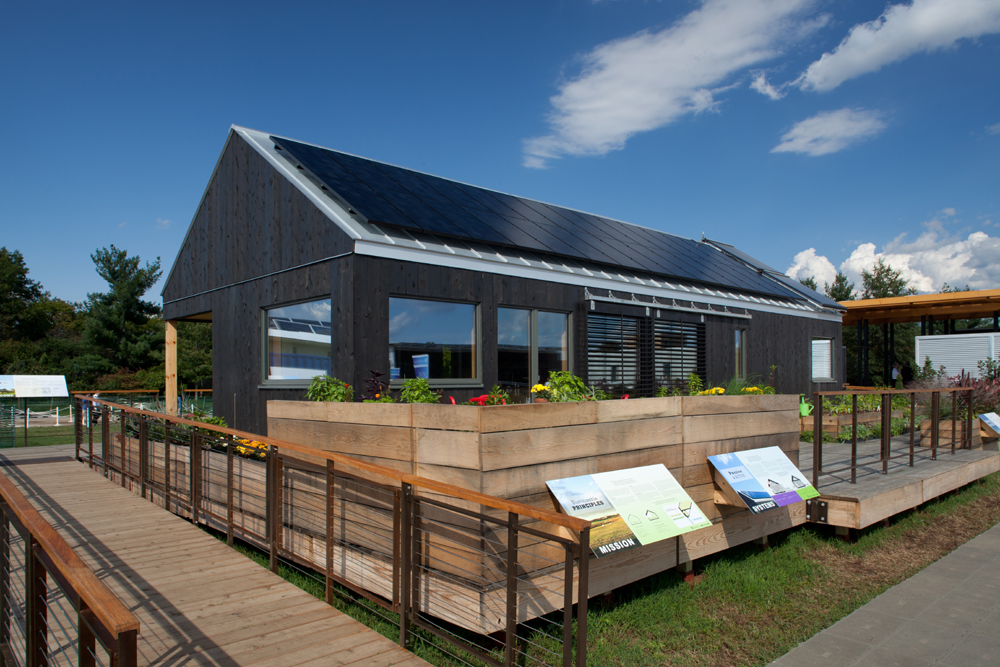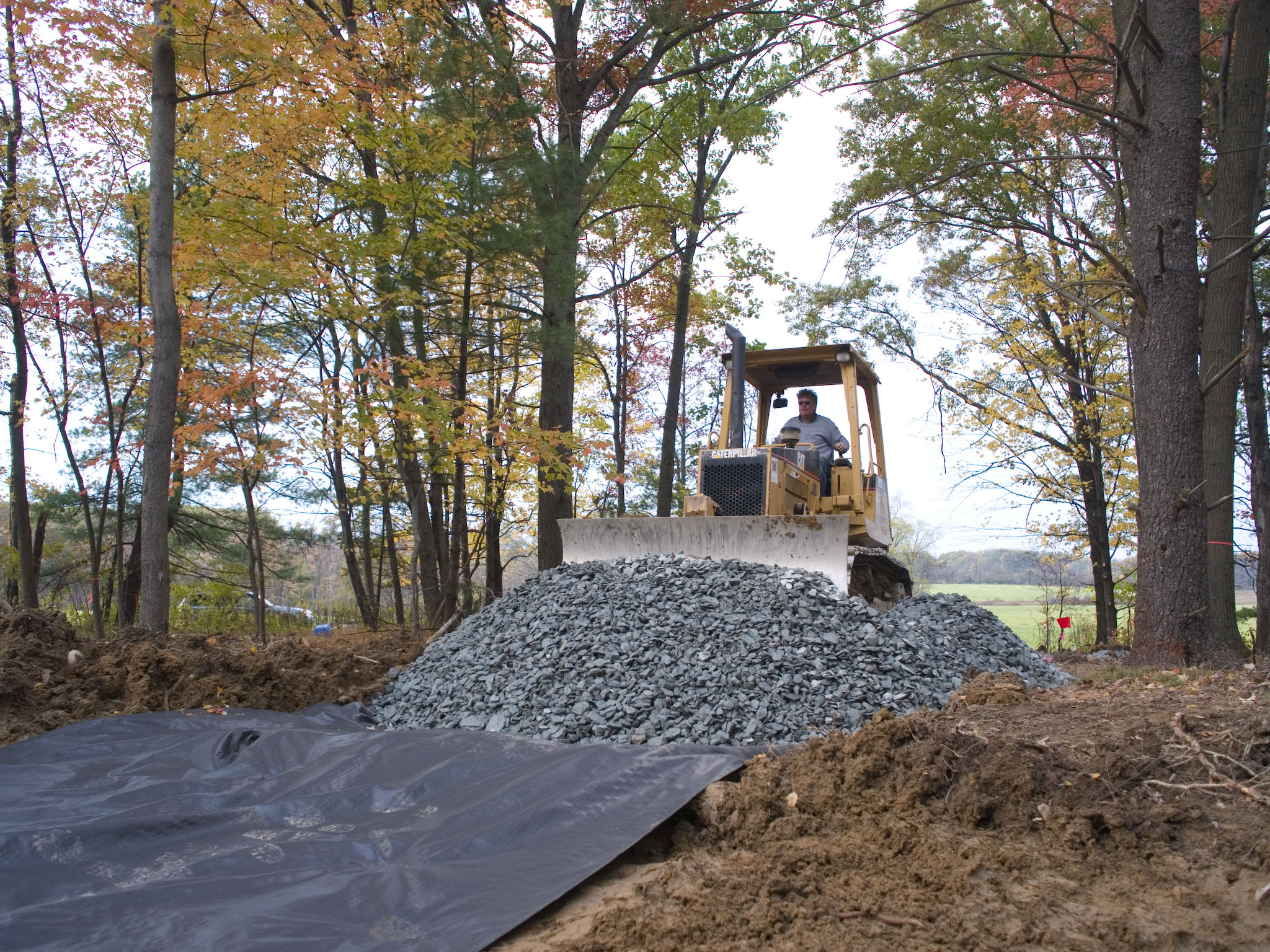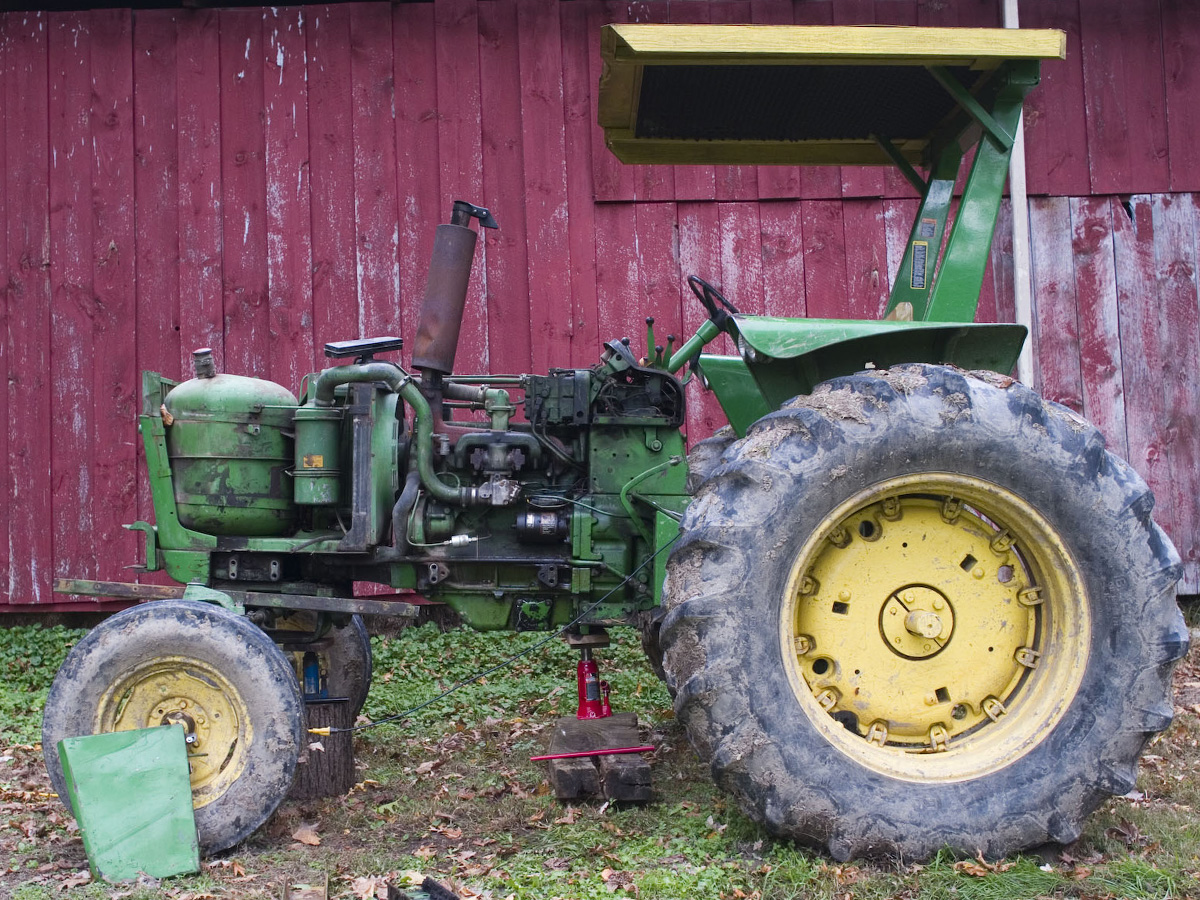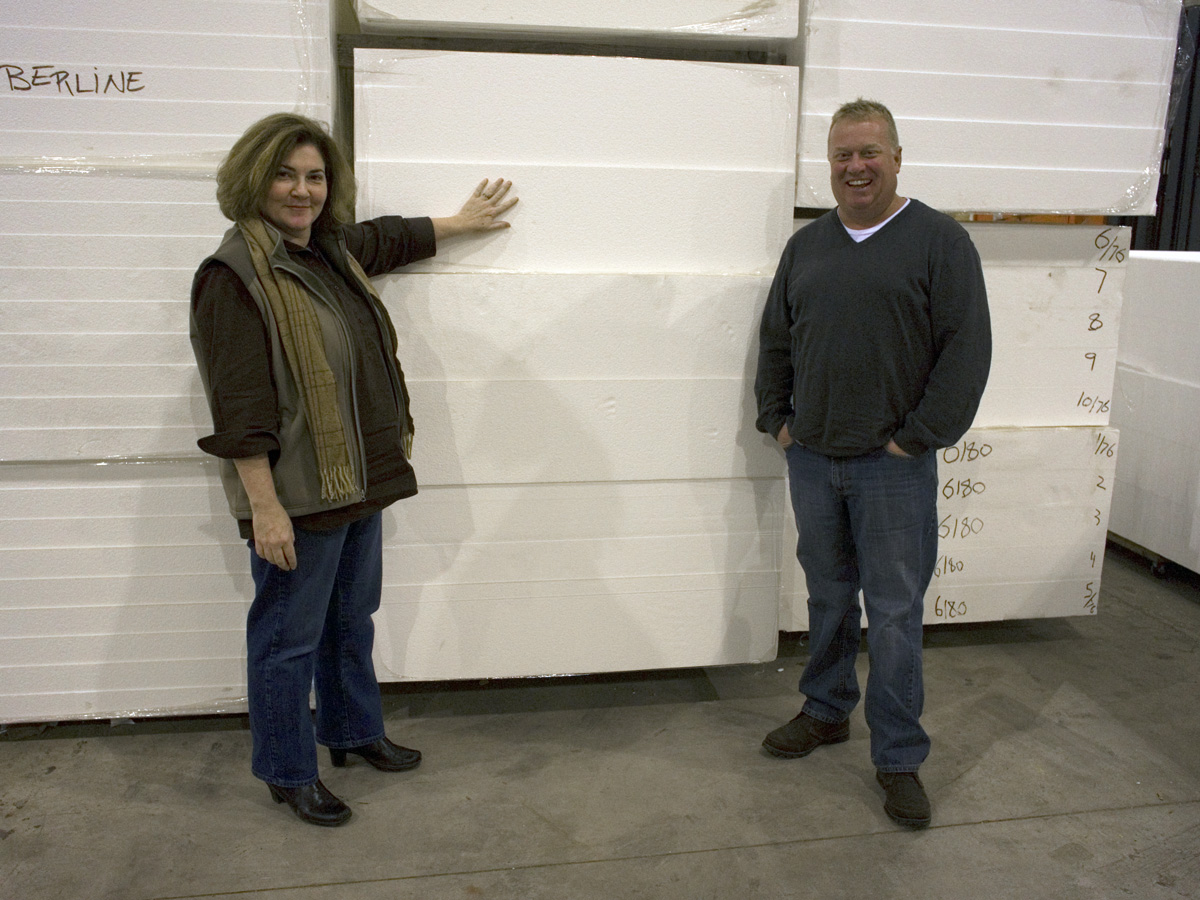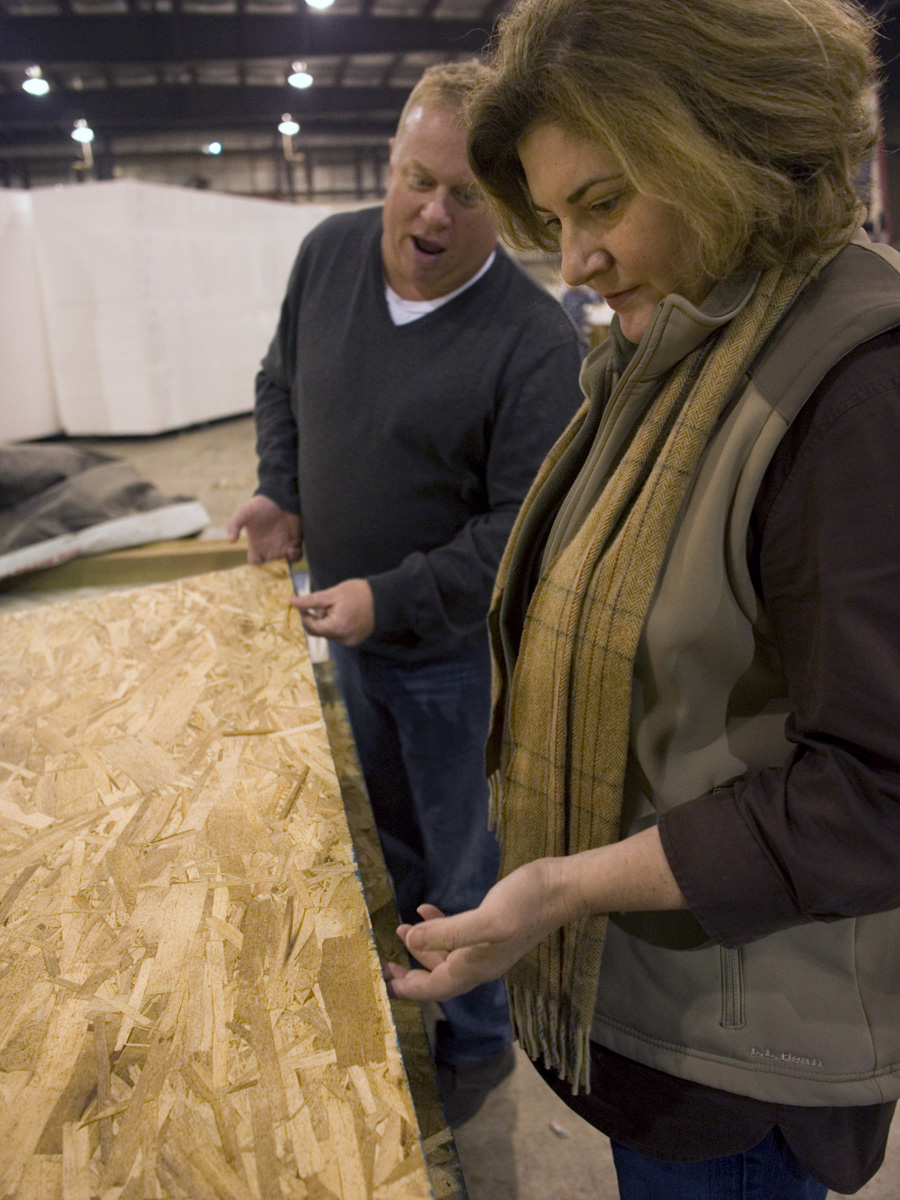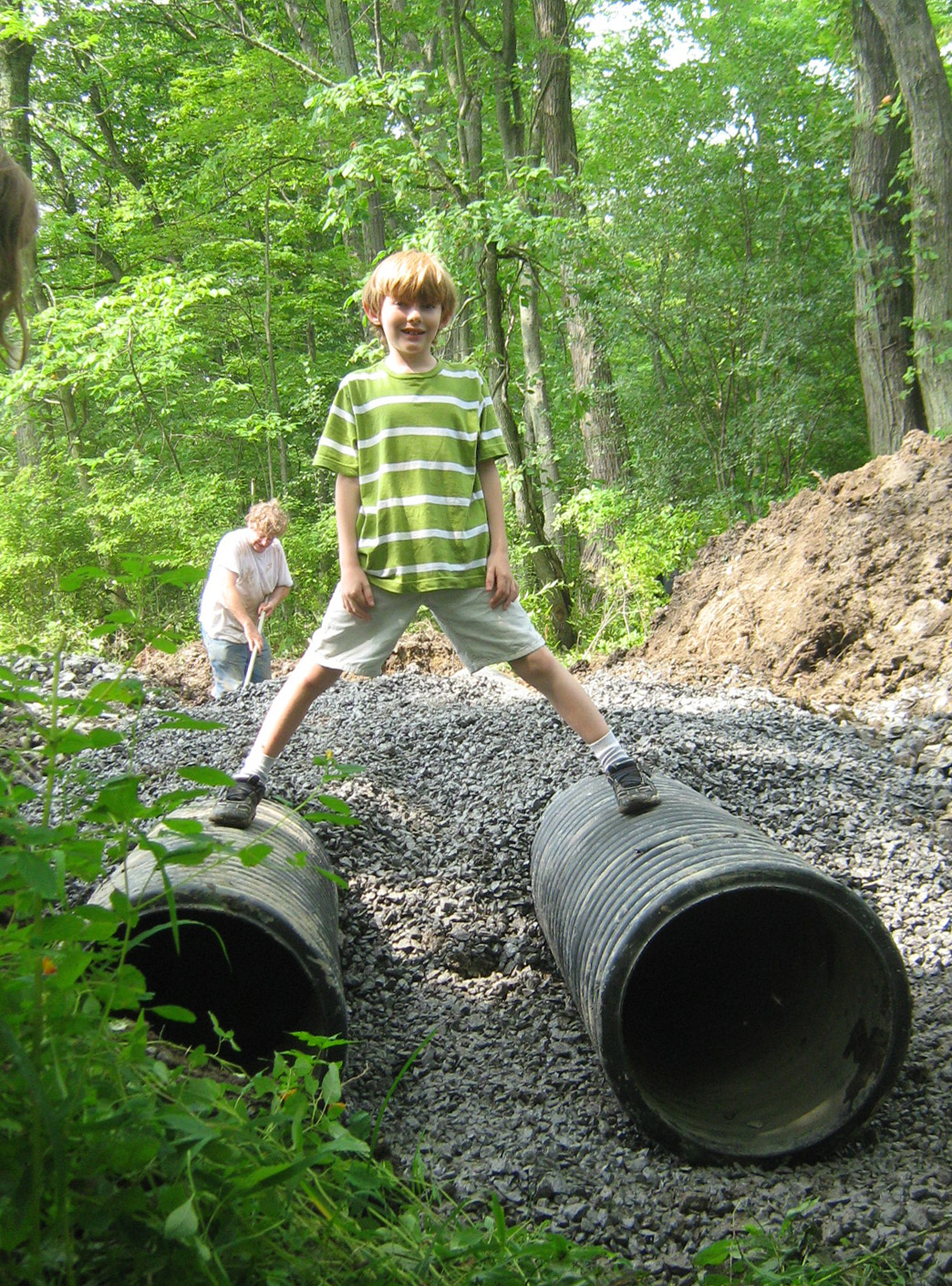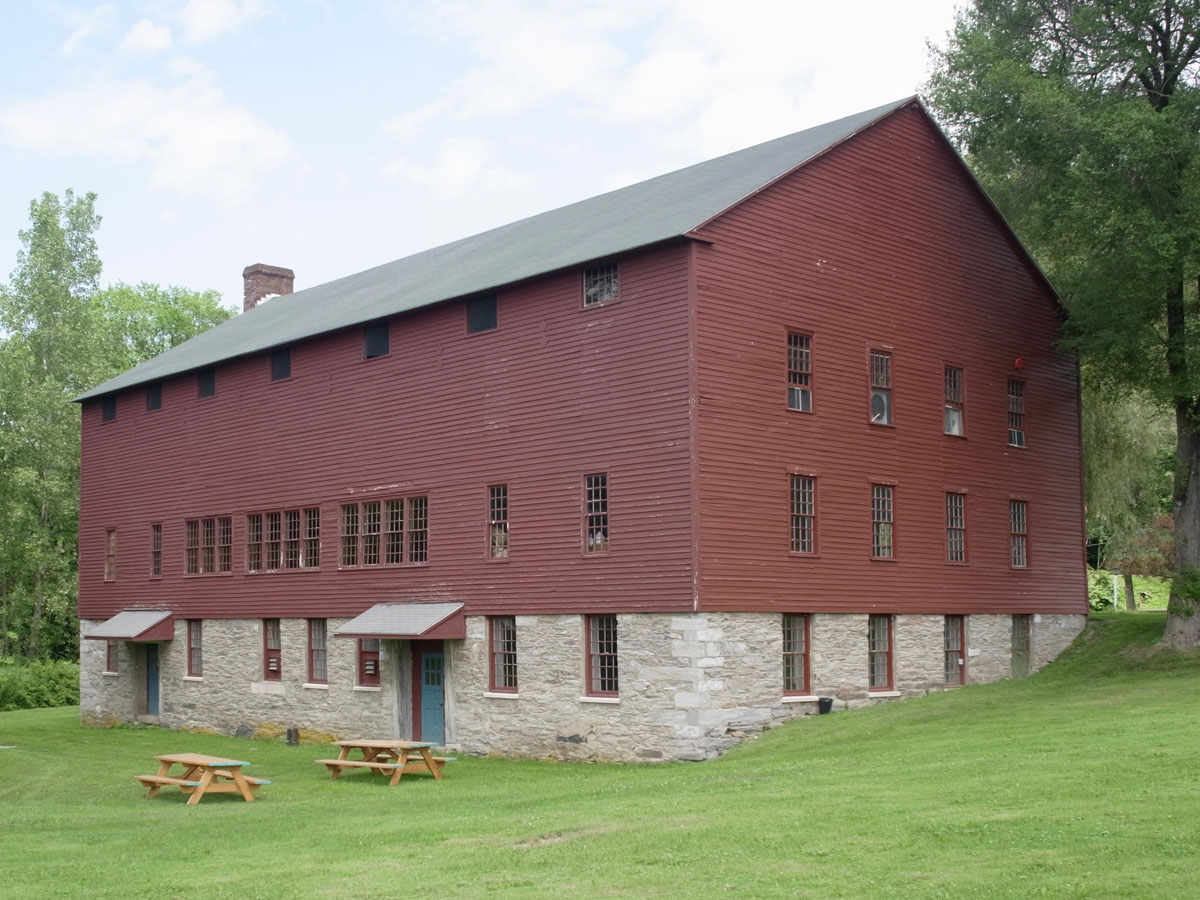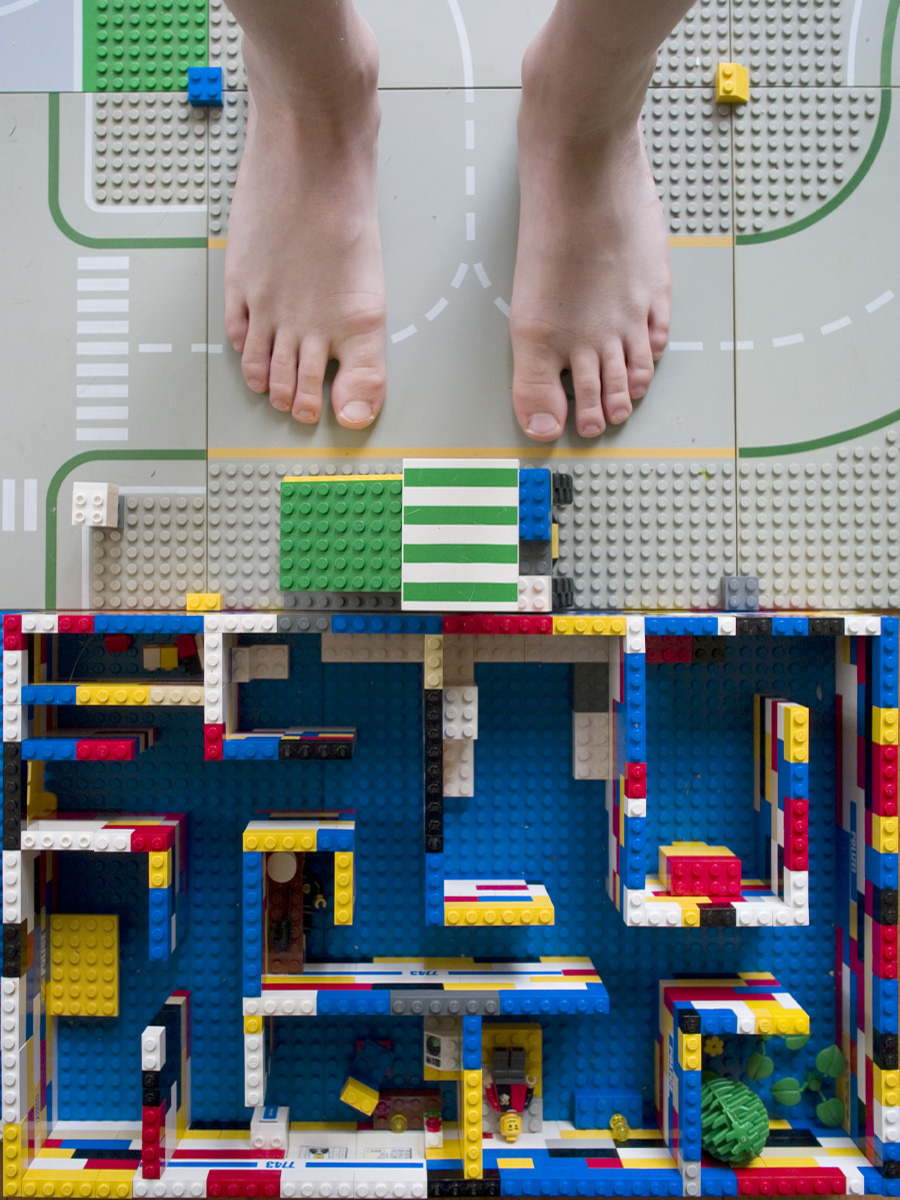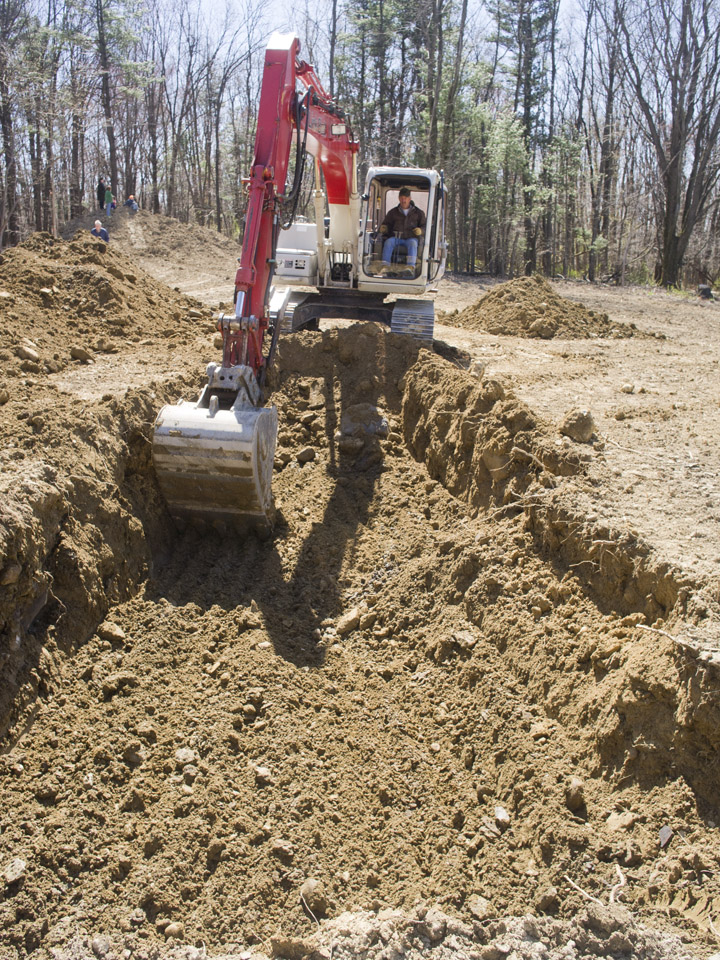 This Passive House is now active. That hole is my ground zero. Right here, on a map from the 1970s, is a circle for a cooling tower. Two utility companies tried to build a nuclear power plant in northern Columbia County, NY, on land that has been in my family for many generations. The community mobilized, lawyers did battle, and it was never built. The way we are building, in contrast, is energy-efficient by design.
This Passive House is now active. That hole is my ground zero. Right here, on a map from the 1970s, is a circle for a cooling tower. Two utility companies tried to build a nuclear power plant in northern Columbia County, NY, on land that has been in my family for many generations. The community mobilized, lawyers did battle, and it was never built. The way we are building, in contrast, is energy-efficient by design.
If they can do it, so can we
Reading for work today, I came across some words to live by while building our house:
“…and make sure you have two year’s worth of self-reliance, resilience, teamwork and community spirit to make it all happen.”
Jack Byrne of Middlebury College is describing his students’ experience designing and building a house for the Solar Decathlon. I post his story on my client’s website and reflect on my reaction: (1) I am twice the age of those students but I share the excitement of a project that stretches my limits and is actually good for people and the planet; (2) like them, I am both giddy and geeky when I talk about our Passive House; (3) I need a boost of their energy and spirit. As we start to build this house, I will start to build community.
Rollercoaster
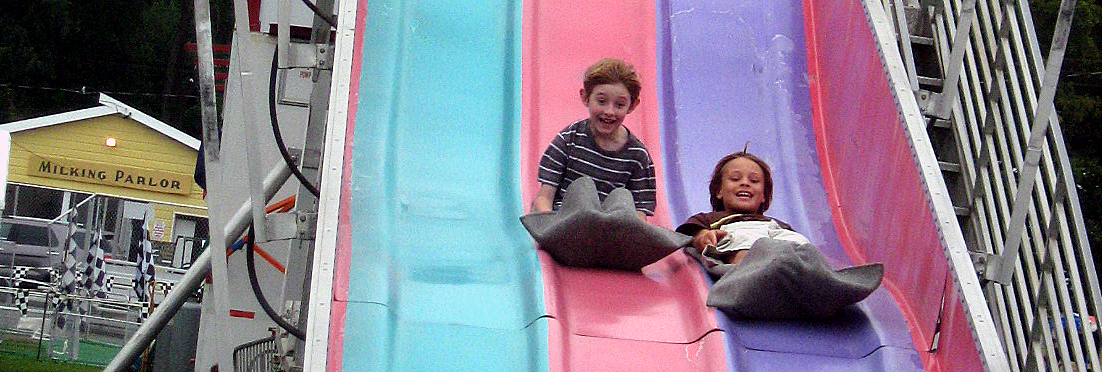 Plans are spinning, bumping and lurching forward. I am reminded of the Columbia County Fair, with fun but scary rides that make me sick and dizzy. I am on the rollercoaster. Prices go up: add a flout system to the septic. Prices go down: the wall panels can be two inches thinner. The weather goes colder, warmer, colder and we worry if we can dig before winter. Surprises leap out, like an unexpected fee. In our house of mirrors, we head down the XPS path only to turn around and try the EPS path. Now it’s our turn to stand in line at the ticket booth, impatiently waiting for our building permit so the real fun can begin.
Plans are spinning, bumping and lurching forward. I am reminded of the Columbia County Fair, with fun but scary rides that make me sick and dizzy. I am on the rollercoaster. Prices go up: add a flout system to the septic. Prices go down: the wall panels can be two inches thinner. The weather goes colder, warmer, colder and we worry if we can dig before winter. Surprises leap out, like an unexpected fee. In our house of mirrors, we head down the XPS path only to turn around and try the EPS path. Now it’s our turn to stand in line at the ticket booth, impatiently waiting for our building permit so the real fun can begin.
The completion of DIY road construction
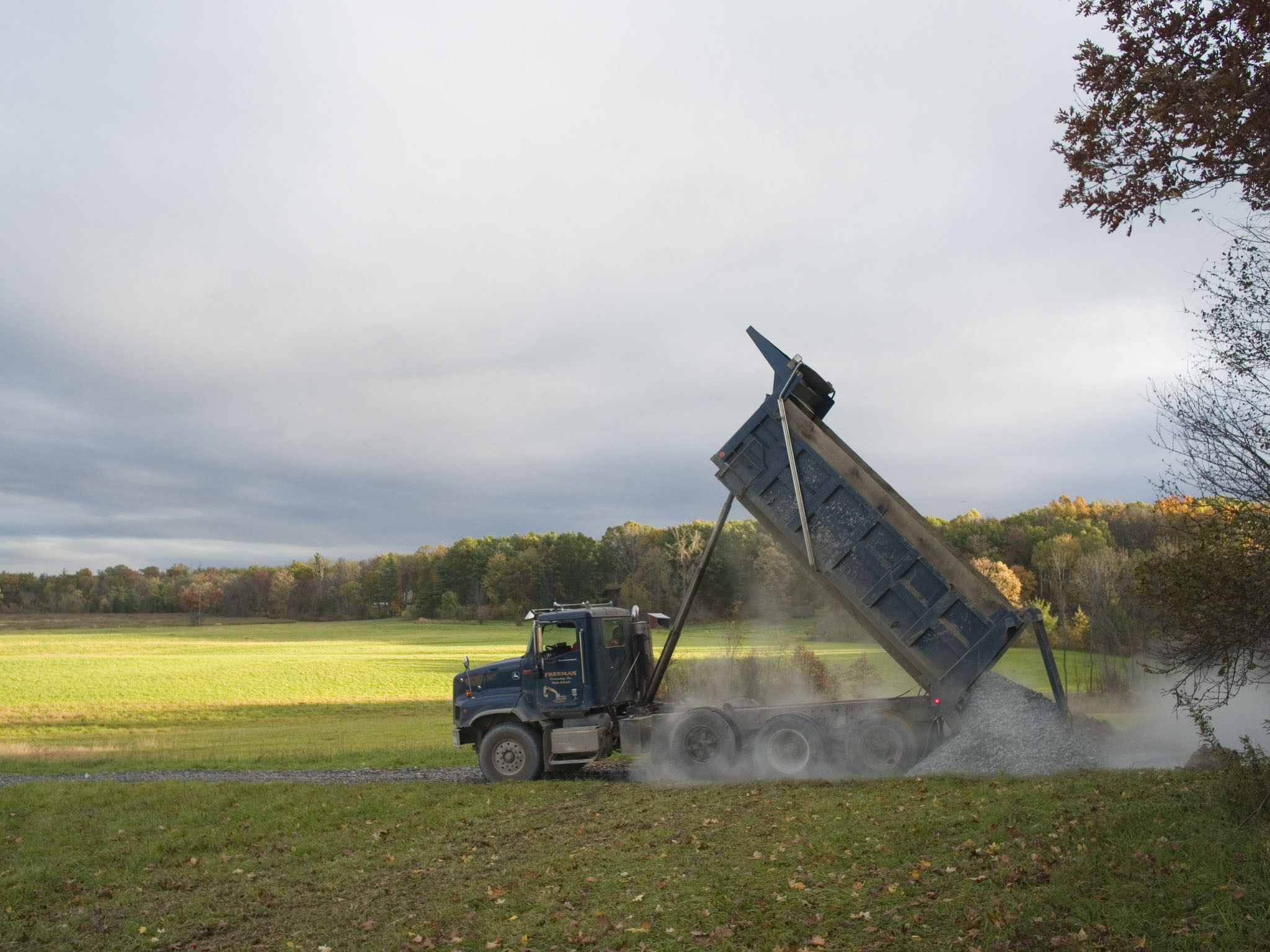 Troy Sand & Gravel delivering a load of stone. Each load weighs about 23 tons, and can cover about 60′ of road length.
Troy Sand & Gravel delivering a load of stone. Each load weighs about 23 tons, and can cover about 60′ of road length.
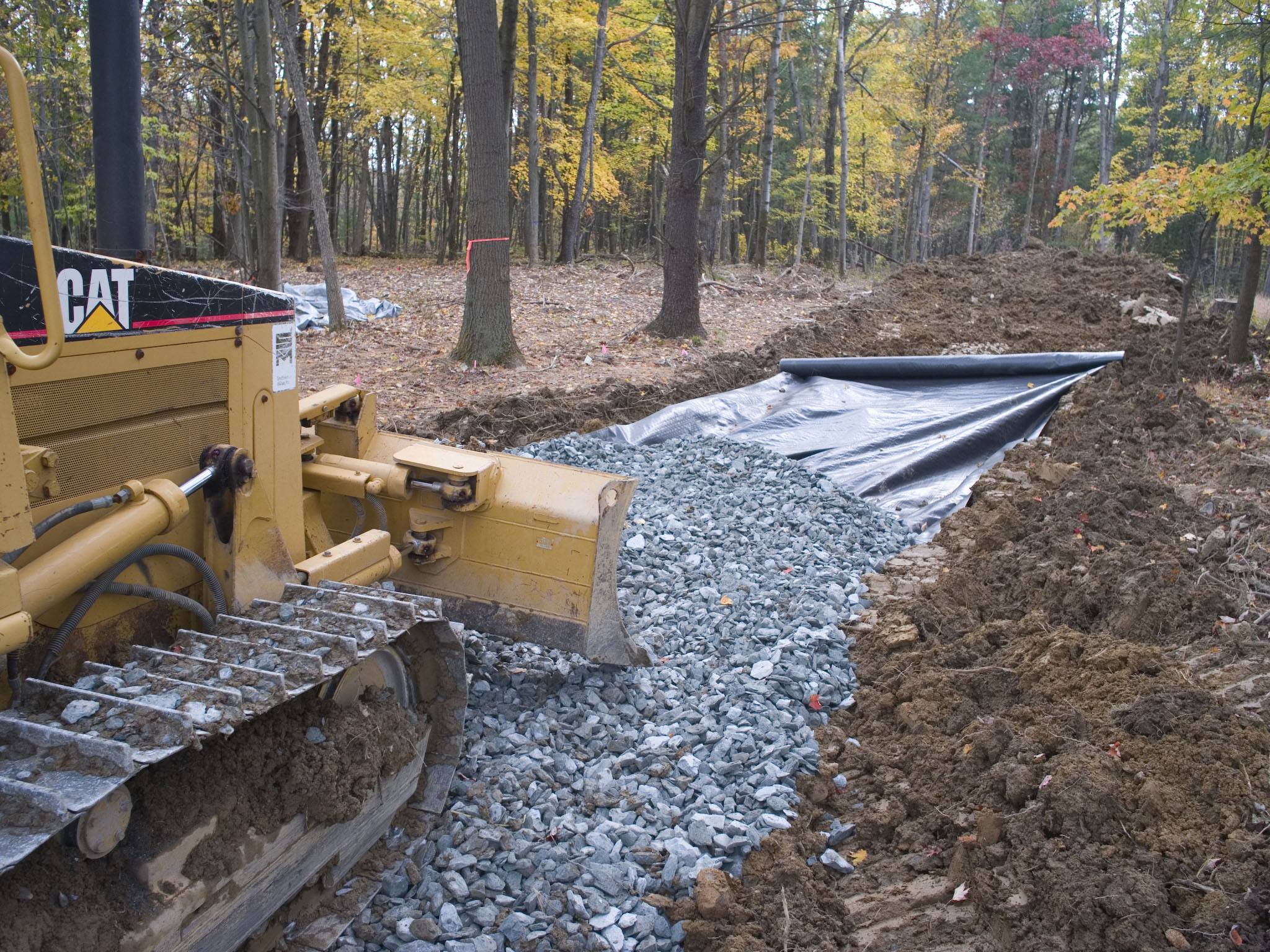 Pushing out the base stone on the highway fabric.
Pushing out the base stone on the highway fabric.
I rented a Caterpillar D-3 bulldozer from Mario’s hardware in Valatie. With a weight of 15,000 pounds, it is just heavy enough to scrape the top soil. It moves the stone into place easily.
The driveway is about a quarter of a mile long. We have finished the last 170′ of road leading up to the house site. We prepared the base by removing the topsoil and pulling the tree stumps. 12′ wide highway fabric is laid on the path followed by a layer of 3″ stone. A final layer of crusher run is laid on top. We’ve built a strong stable road on the wettest farm field in memory. Strong enough to carry the cement trucks and well-digging equipment to our building site.
The 3020 tractor has been repaired
SIPs cookie gets a tastier grey filling
Imagine a cookie sandwich with sheets of wood outside and foam inside. Big cookie panels (SIPs) will become the walls and roof of our gingerbread house. Yesterday we decided to try a new-and-improved recipe for the foam filling.
We were happy with our conventional white rigid foam until Jeff Brooks at Vermont Timber Frames started talking up Neopor and snagged us an upgrade at no additional cost. Neopor is an advanced type of EPS with graphite added. Because Neopor offers better insulation, we can slim down all around — thinner SIPs and thinner glulam beams to hold them up. Switching to Neopor will save us money short-term on construction materials and long-term on utility bills. The R-value is better than ever, with our 10.25″ wall panels increasing from R-37 to R-43 and the 12.25″ roof panels up from R-45 to R-52.
Neopor is all over the green building blogs. In comparison to alternative products, it offers a greater benefit at a lower cost, along with less of an environmental burden, say manufacturers. Fewer raw materials are needed to achieve the same insulating performance. Better insulation, less material.
Birthplace of our walls and roof
We visited Vermont Timber Frames last Friday (Nov 4). Jeff Brooks took us on a tour of the fabrication plant, where stacks of oriented strand board and blocks of solid white EPS foam await lamination. Once glued together, each 8′ x 20′ panel is cut to size and then delivered to the building site and assembled.
Constructing a culvert, take one
Shaker / Serendipity
How to find the perfect house plan: Spend three years studying websites. Do this late at night after putting two little kids to bed. Go to home shows, meet builders and visit model homes. Fill notebooks with sketches. Argue with your spouse. Then, trust that one day you will drive down a country road to a place you’ve never been before and encounter the most perfect inspiration — a Shaker barn, red with a brilliant blue door.
ICFs are like Legos
Nicholas is building a house with Legos. He wants to know if our real house will be the same size, so we measure using a Lego man — 5 men wide, 10 men long. Yes, it’s almost exactly to scale. Actual size is about 25′ X 50′. Nicholas didn’t build his foundation with white Legos but we might.
Insulating Concrete Forms (ICFs) are a lot like Legos. You stack foam blocks three high and pour concrete into their hollow interiors. Repeat three times for a 9′ foundation, fully insulated and ready for sheetrock. We’ve been talking to reps at Logix, Rastra and ARXX. The ARXX website is a good source of information: “ICF technology is a green and sustainable building system that delivers a foundation or wall that is highly energy efficient, structurally tough and has superior fire resistance and sound suppression. ICF construction is fast, easy and cost effective. ARXX ICF structures average 44% less energy to heat and 32% less energy to cool than conventional construction methods.”

